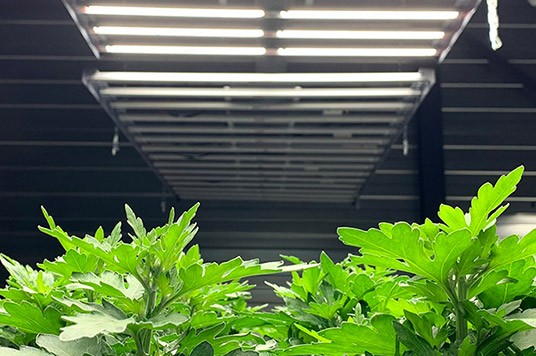The Kelvin colour scale of led lights for indoor plants
Light is important for the growth and development of the plant. Additionally, light exposure can be used to help your plants from their growth phase into their flowering phase. This is because a plant starts preparing itself for the flowering phase when it gets less hours of light a day. As such, a growing plant needs more hours of light exposure than a plant in its flowering phase. If you’re growing indoors, you can black out the plant to regulate the amount of light it receives. Led light is most commonly used because it dissipates less heat and the ideal temperature ( +/- 24 degrees) is easier to control and maintain.

Colors
White lamps can emit many different colors. These colors have a certain effect on your plants. The color your led-lamp emits is CCT (Correlated Color Temperature). Color temperature is expressed in Kelvin or K. Depending on the Kelvin value your lamp will have a certain color. A different color also means a different effect. Generally speaking, you can distinguish the following:
1,500 - 3,000 Kelvin: Bulbs with this CCT value usually are dark orange or red. They stimulate bloom and flowering of your plants.
3,000 – 3,700 Kelvin: These bulbs have a yellow or neutral color. These stimulate photosynthesis during the entire growth phase of your plant.
3,700 – 4,000 Kelvin: Lamps with a warm and neutral color. They stimulate growth of plants.
4,000 Kelvin: Most bulbs with this CCT value usually are a neutral white. They stimulate normal growth in your plants.
4,000 – 5,000 Kelvin: Lamps that emit a light blue color. They stimulate the growth of leaves, stem and stalk.
5,000 – 8,000 Kelvin: These lamps emit a dark blue light. They enhance the development of leaves, stem and stalk of your plant.
PAR
The amount of usable light for plants is expressed as a frequency value within the electromagnetic (light) spectrum. This spectrum runs from UV light to infrared light. The light your plants have available for photosynthesis is called PAR (Photosynthetic Active Radiation). PAR falls within a frequency band of 400-720 nanometers.
Light - video
Rather watch a video? We've made one for you with a simple explanation without too many technical details. Use this link to watch it.



